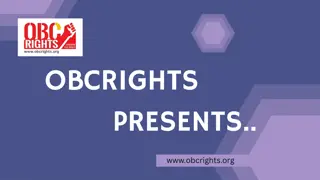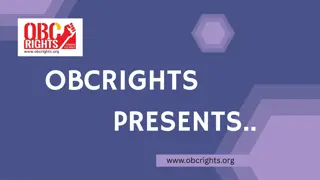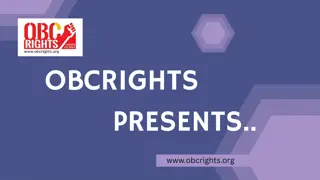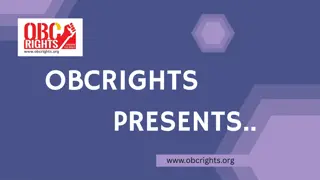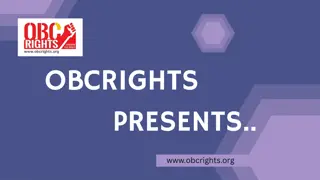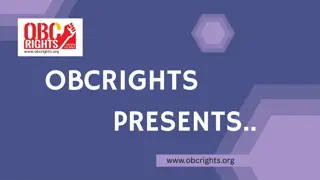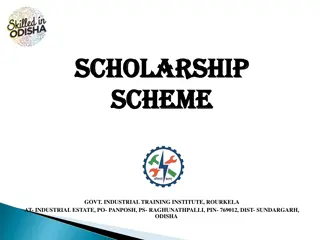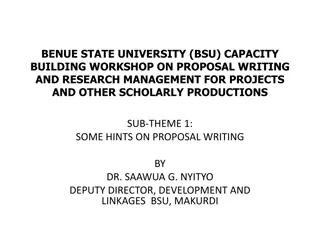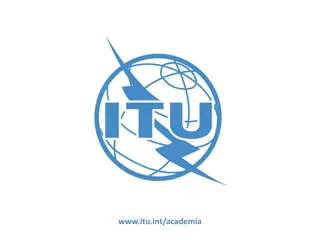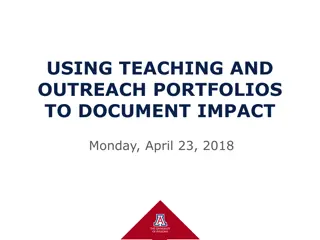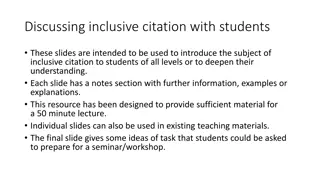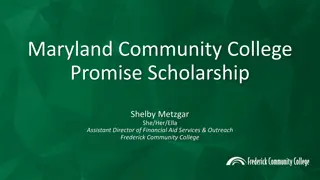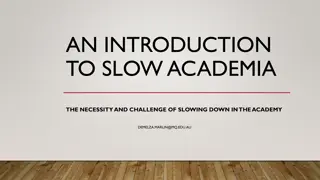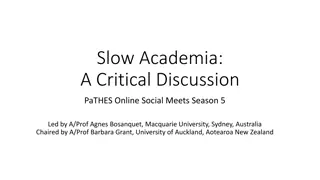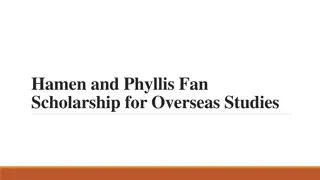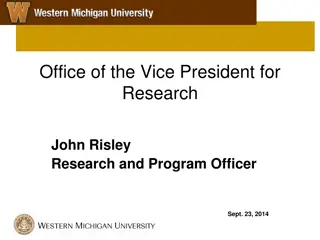Strategies for Securing Scholarship Funding in Academia
Enhancing your chances for success in academia involves navigating the challenging process of obtaining external funding for your scholarship. Despite the frustrations and expectation of rejection, being prepared and persistent can lead to success. Understanding the variations in funding rates and the effort required can help you develop a strategic approach to securing funding for your research endeavors.
Download Presentation

Please find below an Image/Link to download the presentation.
The content on the website is provided AS IS for your information and personal use only. It may not be sold, licensed, or shared on other websites without obtaining consent from the author. Download presentation by click this link. If you encounter any issues during the download, it is possible that the publisher has removed the file from their server.
E N D
Presentation Transcript
EEB 504 and EEB 607 - Spring 2021 - Careers in Academia: How to Enhance your Chances for Success Instructor: Louis J. Gross Chancellor s Professor, Departments of Ecology and Evolutionary Biology and Mathematics Getting Funding for Your Scholarship: Initial Comments, How Hard is it, Funding Mechanisms, The Grant Process, Where to Submit April 12, 2021
Outline of course topics: Types of higher education institutions; How colleges and universities work; Where the money comes from and where it goes; Various roles of a faculty member and prioritizing among them; Stages of a career; Planning for transitions in career stages; Position searches and how to apply; Mentoring - getting it and giving it; Enhancing your teaching; Building your communication capabilities; Administrators and how they impact your career; Effectively preparing for evaluations at various levels; Funding your scholarship; Participating in the broader academic community in your field; Building effective collaborations; Combining your personal life and academic expectations; Time management.
Getting Funding for your Scholarship: Initial Overall Comments: You will be frustrated (everyone is) so be prepared for rejection and expect it Don t expect that you will be highly successful very few faculty ever attract substantial external funding. If you are regularly bringing in some external funding, then you are more successful than most of your colleagues. All money is not the same some requires huge effort for very little funding, some has no allowable indirect costs. Not every institution has the capacity to support success in obtaining external funding, and there are tremendous differences between institutions in their capacity to assist in obtaining funding from different sources. Any lack of success may be because your institution is not set up to assist adequately.
Getting Funding for your Scholarship: How hard is it? Background data on NSF awards (2017): Of research proposals submitted (82% of all proposals to NSF), only 21% were funded. There is variation between programs though. Early career PI funding rate was 18%, vs. 22% to other PIs The 3-year funding rate was 39%, meaning that of all PIs who submitted a proposal over 3 years, 39% received at least one award. Average number of proposals submitted to obtain an award was 2.4 so for those who did get an award during those 3 years, on average they submitted 2.4 proposals Average annual award amount was $169K and average duration of award was 2.9 years. Median award size was about $130K. These values vary tremendously across programs. https://www.nsf.gov/nsb/publications/2018/nsb201915.pdf
Getting Funding for your Scholarship: Types of external funding mechanisms: Grants these are the most common from NSF, NIH, DOE, private Foundations, etc. They support specific research/education projects using a formal proposal process. There are no specific deliverables but you are expected to carry out the man objectives in the proposal. So, if you included a workshop, tutorial, etc. in the proposal you must carry out those activities. However, there is considerable flexibility to modify the specific research efforts you proposed to do. Training grants are somewhat less flexible you are expected to carry out whatever educational program you proposed (e.g. undergrad research, graduate training, etc.). Virtually all grants are awarded to the institution, not to the faculty member. fellowships, coop agreements, contracts.
Getting Funding for your Scholarship: Types of external funding mechanisms: Contracts these are the most common from industry and from various government agencies in which there are specific tasks to carry out you are providing technical assistance to the client. Many State-level awards to higher education institutions are contracts. These have deliverables meaning specific activities, reports, experiments, data collection, etc. that you are expected to carry out. Contracts are in general much less flexible than grants. Contracts are awarded to the institution and may well arise from a non-competitive process (e.g. you were specifically asked to carry out the work without there being a formal open proposal process), but often there is at least some form of bid process .
Getting Funding for your Scholarship: Types of external funding mechanisms: Cooperative agreements these are most common from various government agencies in which there is a collaboration expected between the agency staff and your institution. These may be research or education focused and how much collaboration there is with the agency is highly variable. Many Department of Interior units use these to foster collaborative efforts between their staff and college researchers (and there are formal coop-units from these agencies at colleges). Fellowships these can be awarded to the institution or to an individual faculty member. They may be for general support (e.g. a stipend for a leave), or may be targeted to a specific topic, area or individual.
Getting Funding for your Scholarship: Types of external funding mechanisms: Sub-awards these typically arise because a grant is awarded to a particular university and there is a partnership with faculty at other universities so some of the funding is sent from the main institution receiving the award to other institutions. NSF awards may be handled in this way to foster partnerships between institutions, or they may be structured as Collaborative proposals in which each institution receives its own separate NSF award. Sub-contracts similar to sub-awards for grants but in this case one entity receives a contract (or a grant) and wishes another entity to carry out specific tasks. For example, many grants that require evaluation have sub- contracts to evaluation experts at other institutions to carry out the evaluations required.
Getting Funding for your Scholarship: Types of external funding mechanisms: Sub-awards these typically arise because a grant is awarded to a particular university and there is a partnership with faculty at other universities so some of the funding is sent from the main institution receiving the award to other institutions. NSF awards may be handled in this way to foster partnerships between institutions, or they may be structured as Collaborative proposals in which each institution receives its own separate NSF award. Sub-contracts similar to sub-awards for grants but in this case one entity receives a contract (or a grant) and wishes another entity to carry out specific tasks. For example, many grants that require evaluation have sub- contracts to evaluation experts at other institutions to carry out the evaluations required.
Getting Funding for your Scholarship: Types of external funding mechanisms: A special tip for NSF awards DCL Dear Colleague Letter these are used by NSF to make announcements of new initiatives that are not handled through the typical proposal grant and review process. They are now one of the easiest ways to obtain NSF support, typically for smaller pilot projects, conferences, etc. A DCL will announce a new initiative, inform you about the funding mechanisms, and often note that you should contact particular program officers with your idea prior to submitting a full proposal. There may be back-and-forth with a program officers prior to them asking you to submit
Getting Funding for your Scholarship: Changes to awards: Supplements these are additions to awards to allow you to carry out some new work that is aligned with the effort on the original award. Typical supplements at NSF are for an REU student to work on the project, a workshop/tutorial to promulgate the research being done. Modifications these are changes to a contract to provide additional funding, modify the tasks/deliverables, change the time period for the award. No Additional Cost Extension this extends the end date of a project, typically because you have funds remaining and the funding agency is OK with you continuing to work on the project Rebudget this allows you to change the amount being spent among the project components, your institution can approve sometimes, or agency may have to approve
Getting Funding for your Scholarship: The process for getting an award: (i) Have an idea that is supportable (ii) Find an appropriate agency and read the rfp (Request For Proposals) (iii) Write the proposal and submit it (iv) Wait (anywhere from 2 months to 2 years or longer) (v) If accepted, typically a revised budget and revised scope of work is needed (e.g. they cut the budget) - send this in and wait another couple of months (vi) If denied, read the reviews, decide if resubmission might be successful and if so, revise based upon the reviewers comments and resubmit. Otherwise submit to a different agency, or choose a different idea to submit, and go back to (iii) The above can take 6 months to 2 years for first proposal - NSF typically takes 6 to 9 months after submission to decide on a proposal
Getting Funding for your Scholarship: Deciding where to submit: Where to submit depends on the idea, what the agency is currently funding, and how much funding you need. Be sure you are on the lists to get emails from the agencies of possible interest about their requests (every division at NSF sends out emails regarding new opportunities nsf-update@govdelivery.nsf.gov). Most higher ed institutions have a contract with a firm that searches for awards of possible interest to you and send you a weekly listing from many agencies/foundations. At UTK this is called Pivot. Be sure to update your profiles on whatever product is used to ensure the listings you get are appropriate. Many professional societies send out similar emails or notes to lists about new programs that are of interest
Getting Funding for your Scholarship: Deciding where to submit: Aside from NSF, NIH and some competitive grants programs in other agencies, much Federal R&D funding is project driven or task-specific. You have to be doing something directly related to their project, or have an approach that can be made useful for their project, in order to be supported. To be successful here requires building a relationship with a particular program manager at the agency until they eventually ask you to submit a proposal (which may or may not be connected to one of their formal proposal announcements). So networking to cultivate a relationship with a program manager is essential for success from many agencies (DoD is like this) they are cultivating you and you are cultivating them. Private Foundations are typically very difficult to obtain funding from without having connections to their funding officers. Many Foundations accept applications for funding on from those who are invited to apply.


